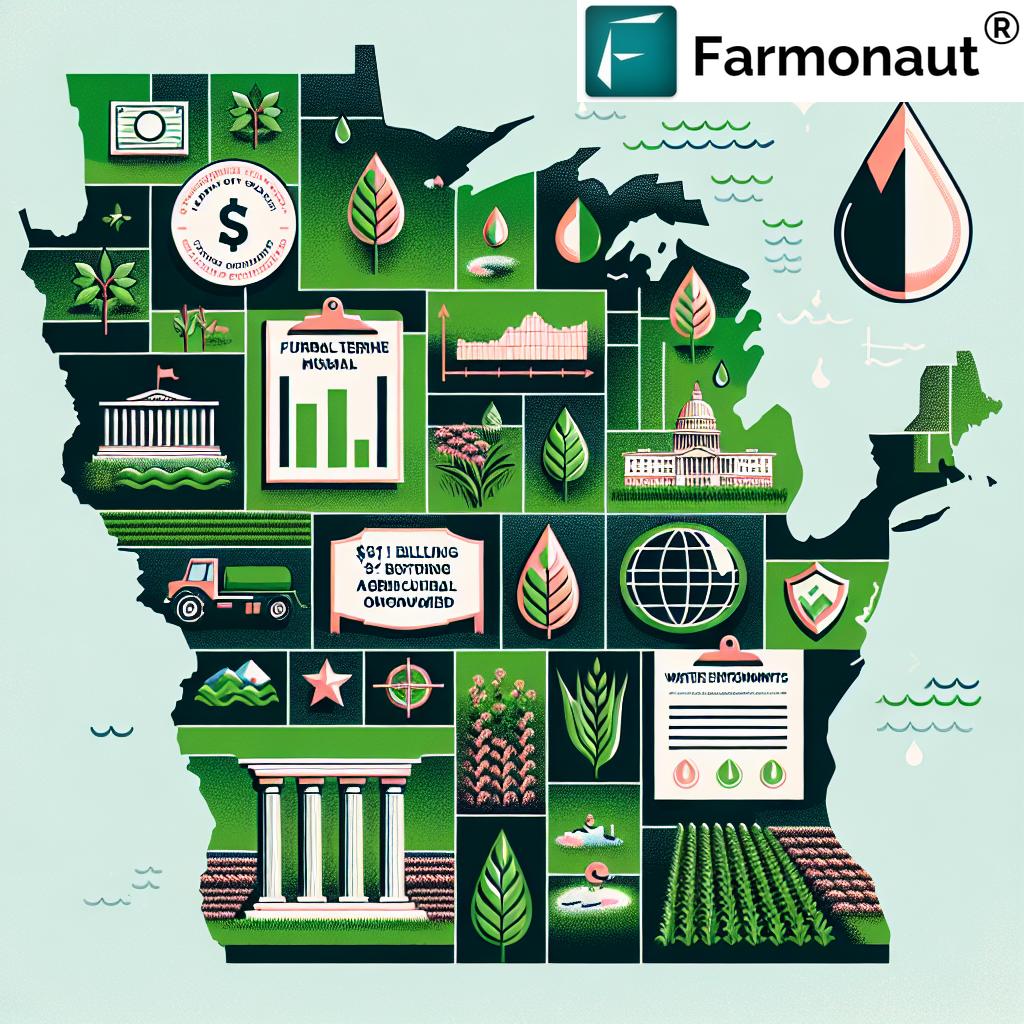Devastating Blow: Florida Agriculture Faces $2 Billion+ Loss as Hurricane Milton Wreaks Havoc on Farms and Crops
Florida’s agricultural sector has been dealt a severe blow as Hurricane Milton, a Category 3 storm, swept through the state, causing widespread devastation to farms and crops. The economic impact is staggering, with initial estimates placing the loss at over $2 billion. This disaster has left farmers and ranchers reeling, prompting urgent calls for assistance and recovery efforts.

Florida Agriculture Hurricane Damage Assessment
Agriculture Commissioner Wilton Simpson has conducted a comprehensive Florida agriculture hurricane damage assessment, revealing the extent of the devastation caused by Hurricane Milton. The preliminary findings indicate losses ranging from $2 billion to $2.5 billion, a figure that could potentially rise as more detailed assessments are carried out.
The Wilton Simpson agriculture assessment highlights several key areas of concern:
- Extensive damage to crop fields, including citrus groves and vegetable farms
- Destruction of agricultural infrastructure such as greenhouses and irrigation systems
- Significant losses in the livestock sector, including cattle and poultry
- Severe impact on the state’s vital Florida strawberry industry
Commissioner Simpson stated, “The Hurricane Milton economic impact on our agricultural community is unprecedented. We’re working tirelessly to assess the full extent of the damage and provide immediate support to our farmers and ranchers.”
Hurricane Milton Impact on Florida Crops
The Hurricane Milton impact on Florida crops has been particularly severe, with the strawberry industry bearing the brunt of the storm’s fury. Florida, known as the winter strawberry capital of the world, has seen extensive damage to its berry fields, potentially affecting global supply chains and local economies.
Other crops significantly affected include:
- Citrus fruits, exacerbating challenges already faced by the industry
- Tomatoes and other vegetables, crucial for the state’s fresh produce market
- Sugarcane fields in South Florida
- Nursery plants and ornamentals, a key sector in Florida’s agricultural economy
The compounded effect of Hurricane Milton, coming on the heels of previous storms, has left many farmers in a precarious position, struggling to recover and maintain their operations.
USDA Disaster Assistance for Florida Farmers
In response to the crisis, the United States Department of Agriculture (USDA) has emphasized the availability of USDA disaster assistance agriculture programs for affected farmers and ranchers. These programs are designed to provide critical support even without formal disaster declarations, ensuring that aid can reach those in need as quickly as possible.
Key USDA assistance programs include:
- Emergency Conservation Program (ECP) for land rehabilitation
- Emergency Assistance for Livestock, Honeybees, and Farm-Raised Fish Program (ELAP)
- Tree Assistance Program (TAP) for orchards and nurseries
- Noninsured Crop Disaster Assistance Program (NAP) for producers without Florida crop loss insurance
Farmers are encouraged to contact their local USDA Service Centers to learn more about these programs and begin the application process.

Florida Strawberry Industry Recovery
The Florida strawberry industry recovery is a top priority for state officials and agricultural organizations. The industry, centered in Plant City and surrounding areas, is not only a significant economic driver but also a cultural icon for the state.
Recovery efforts for the strawberry industry include:
- Immediate assessment of field damage and potential for salvage
- Coordination with processing facilities to handle salvageable crops
- Implementation of rapid replanting strategies where possible
- Exploration of alternative growing methods to mitigate future risks
Industry leaders are working closely with state and federal agencies to ensure that strawberry farmers receive the support needed to rebuild and prepare for the next growing season.
Agricultural Block Grants for Hurricane Relief
Senator Rick Scott has been at the forefront of Rick Scott agriculture advocacy, pushing for the implementation of agricultural block grants Florida to expedite the recovery process. These grants would provide immediate financial assistance to farmers and ranchers, allowing them to begin rebuilding their operations without delay.
The proposed block grants would cover various aspects of recovery, including:
- Debris removal and land clearing
- Repair and replacement of damaged equipment
- Restoration of damaged crops and replanting costs
- Support for livestock care and feed
Senator Scott emphasized, “Our farmers are the backbone of Florida’s economy. We must ensure they have the resources needed for a swift recovery through these agricultural block grants for hurricane relief.”
Florida Farm Recovery After Hurricane Milton
The road to Florida farm recovery after Hurricane Milton will be challenging, but state and federal agencies are mobilizing to provide comprehensive support. The Florida Department of Agriculture has announced a program of interest-free loans for essential property repairs, offering a lifeline to farmers struggling with immediate recovery costs.
Key elements of the recovery plan include:
- Rapid deployment of assessment teams to document damage
- Streamlined application processes for disaster relief programs
- Coordination with local extension offices to provide technical assistance
- Collaboration with agricultural cooperatives to poolresources and support
The hurricane recovery farming industry efforts are crucial not only for individual farmers but for the entire state’s economic stability. Agriculture remains a cornerstone of Florida’s economy, and a swift recovery is essential to maintain food security and economic vitality.
Economic Impact of Hurricane Milton on Agriculture
The economic impact of Hurricane Milton on agriculture extends far beyond the immediate crop losses. The ripple effects will be felt throughout the supply chain, from farm workers to processors, distributors, and ultimately consumers.
Significant economic impacts include:
- Potential job losses in rural communities heavily dependent on agriculture
- Increased food prices due to supply shortages
- Reduced export capacity, affecting Florida’s trade balance
- Long-term implications for agricultural investment and insurance costs
Economists warn that the full extent of the economic impact may not be fully realized for months or even years to come, underscoring the need for sustained support and strategic planning for the agricultural sector.
Innovative Solutions for Disaster Assessment and Recovery
In the face of such devastating natural disasters, innovative technologies are playing an increasingly crucial role in damage assessment and recovery planning. Farmonaut, a leader in agricultural technology, offers advanced remote sensing solutions that can significantly aid in the recovery process.
Farmonaut’s satellite-based technology provides:
- Rapid, large-scale assessment of crop damage
- Detailed mapping of affected areas for targeted relief efforts
- Data-driven insights for efficient resource allocation
- Monitoring of recovery progress over time
By leveraging these technologies, farmers and officials can make more informed decisions about recovery strategies and resource deployment, potentially accelerating the rebuilding process.
Access Farmonaut’s innovative solutions:
For developers interested in integrating Farmonaut’s capabilities:
Download Farmonaut’s mobile apps for on-the-go access:
Conclusion: The Path Forward for Florida Agriculture
As Florida grapples with the aftermath of Hurricane Milton, the resilience of its agricultural community is being put to the test. The road to recovery will be long and challenging, but with coordinated efforts from state and federal agencies, innovative technologies, and the indomitable spirit of Florida’s farmers, the industry will rebuild.
The coming months will be critical for implementing Florida agriculture disaster relief programs and strategies. The support of policymakers, the dedication of agricultural professionals, and the adoption of cutting-edge technologies will be key factors in overcoming this devastating blow to Florida’s agricultural sector.
As the state moves forward, the lessons learned from Hurricane Milton will undoubtedly shape future disaster preparedness and response strategies, ensuring that Florida’s agriculture remains resilient in the face of future challenges.
















